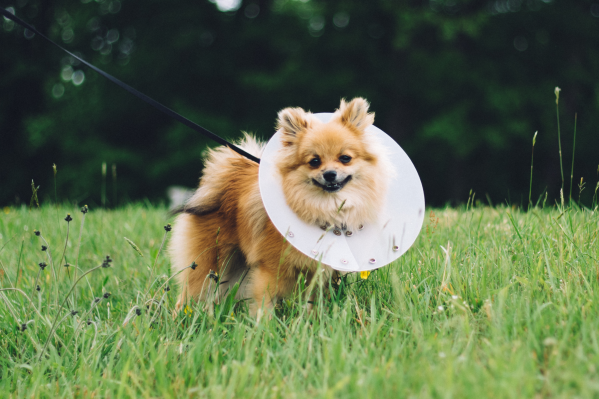It’s scary enough when your poor pup gets a bee sting or a spider bite. And it’s even more alarming if your dog has an allergic reaction to said sting or bite and experiences hives, face swelling—or in very rare cases—goes into anaphylactic shock, a life-threatening condition.
The suddenness of the reaction may have you understandably worried for your furry friend. Pawp is there for you 24/7 to talk to a vet about your dog’s specific condition, no matter what it may be.
Here are some of the signs your dog is having an allergic reaction and how those reactions are generally treated.
Signs your dog is having an allergic reaction
Allergic reactions are different than general allergies your dog may have to certain foods or environments. Allergies are a long-term, chronic issue, whereas allergic reactions are a sudden short-term situation that usually only last for a few hours. If you think your dog might have allergies, you can find information on treating them here.
The most common signs of an allergic reaction are swelling of the cheeks, lips, muzzle, and eyelids.
“These symptoms can be pretty severe and make your dog itchy, uncomfortable and prone to panting a lot,” explains veterinarian Dr. Jo Myers, DVM.
Some dogs can also develop hives when having an allergic reaction. Boxers and bully breeds are also more prone to having allergic reactions and are not only more likely to break out in facial swelling or hives, but also have those symptoms for longer.
In rare cases, if a dog is stung or bitten or—in very, very, rare cases—has an adverse reaction to an injection of medication, a dog’s hives or swelling can escalate into anaphylactic shock. This is the most serious type of allergic reaction, and its symptoms include rapid breathing, pale gums, weakness, collapse, and rapid loss of consciousness.
What to do if your dog is having an allergic reaction
“Most allergic reactions, like what we see with bee stings, for example, are relatively mild and temporary,” says Dr. Myers. “Even if the dog's face and muzzle have swelled up to the point that your dachshund now looks like a shar-pei mix, those symptoms are expected to fade away over a couple of hours.”
If those symptoms, however, last for more than 24 hours, you should seek veterinary care. It’s also important to keep an eye on your pup to make sure their condition doesn’t deteriorate into something worse.
“In very rare circumstances, a dog with a swollen face or hives may progress into anaphylaxis,” says Dr. Myers. “This is a very fast process and the dog will appear to be in serious distress rapidly, showing symptoms like labored breathing, weakness, collapse, pale gums, and loss of consciousness within only a few minutes.”
Anaphylaxis occurs minutes after a dog is stung or bitten and is an urgent, life-threatening emergency that will require a visit to the vet immediately.
Fortunately, most allergic reactions do not turn into anaphylaxis and clear up on their own in just a few hours. If they last long enough to head to the vet, however, your dog’s doctor will likely give them medication to help them recover.
“When symptoms are more serious or last longer, your veterinarian may prescribe antihistamines or a short course of a corticosteroid like prednisone,” Dr. Myers explains. “Life-threatening allergic reactions are treated with corticosteroids and epinephrine.”
The good news, again, is that severe allergic reactions are relatively rare. And in the unfortunate cases where things might be more serious, Pawp and your vet are there to help you and your pup.
